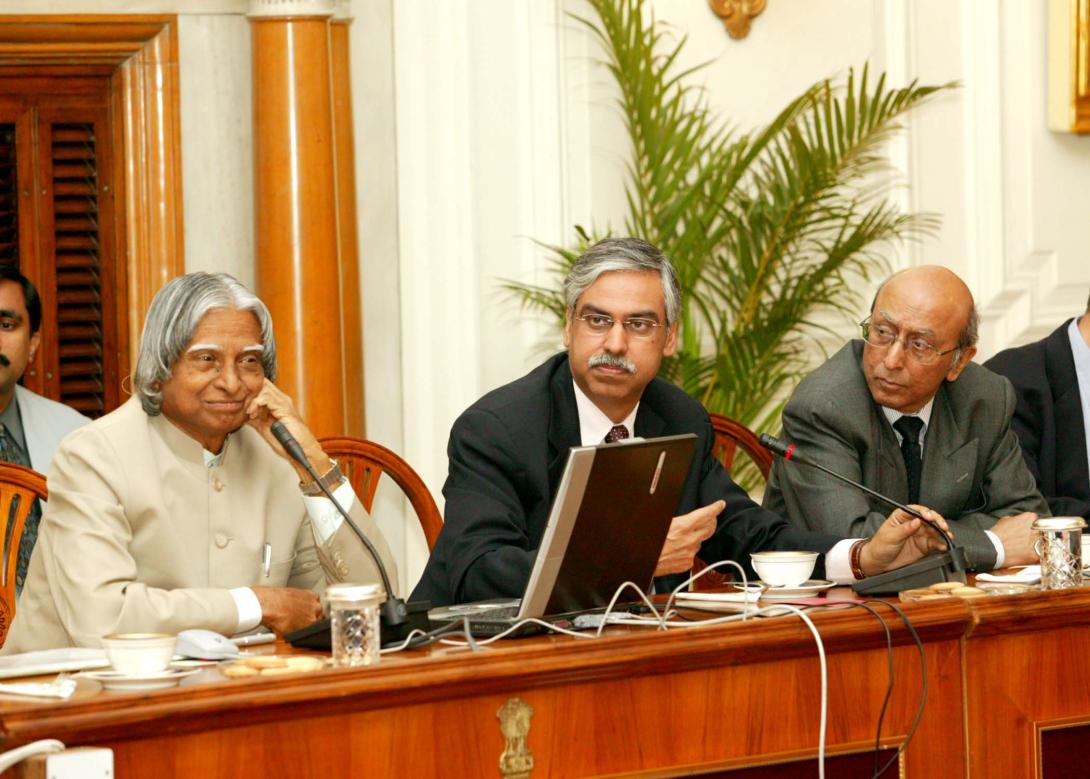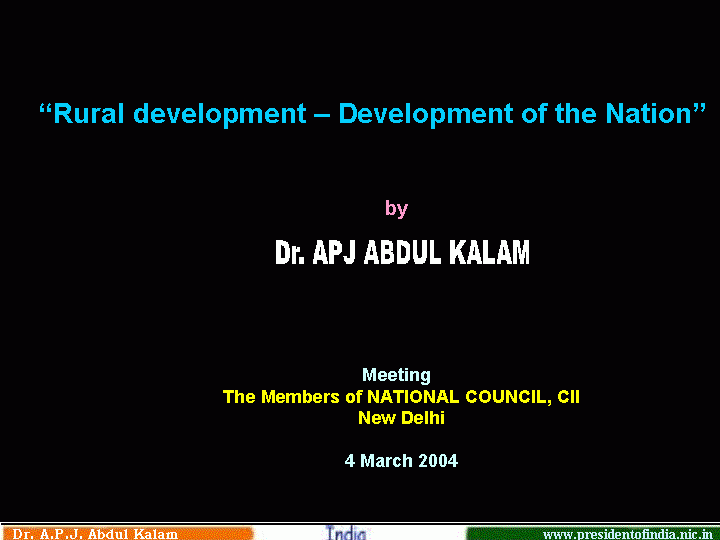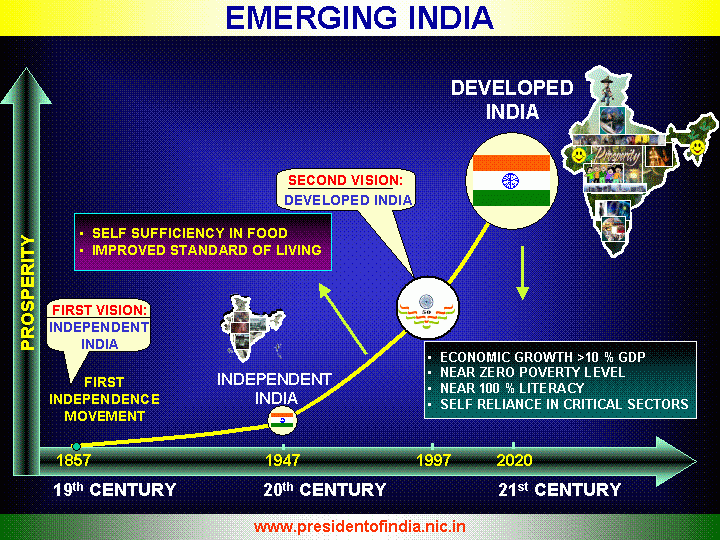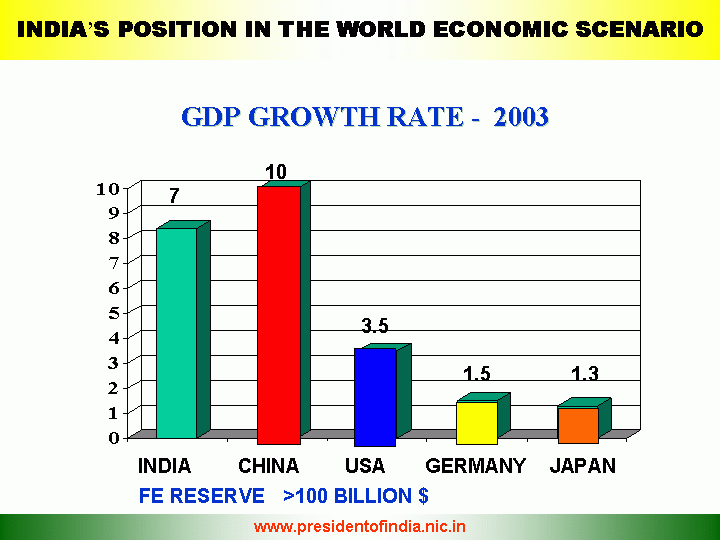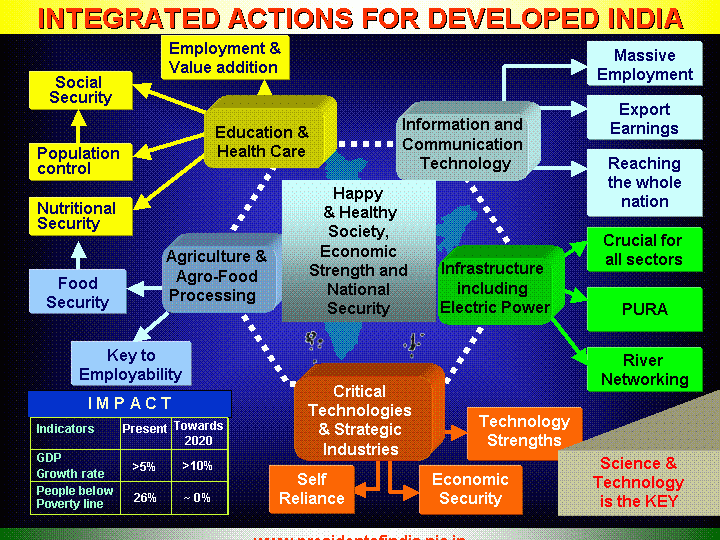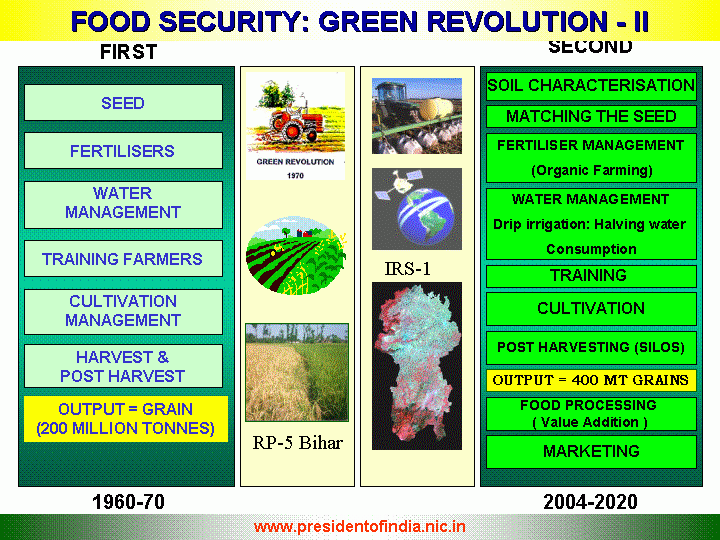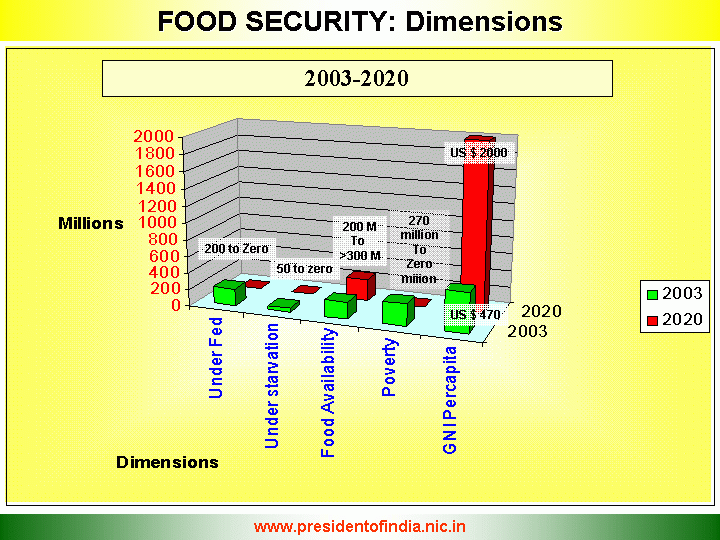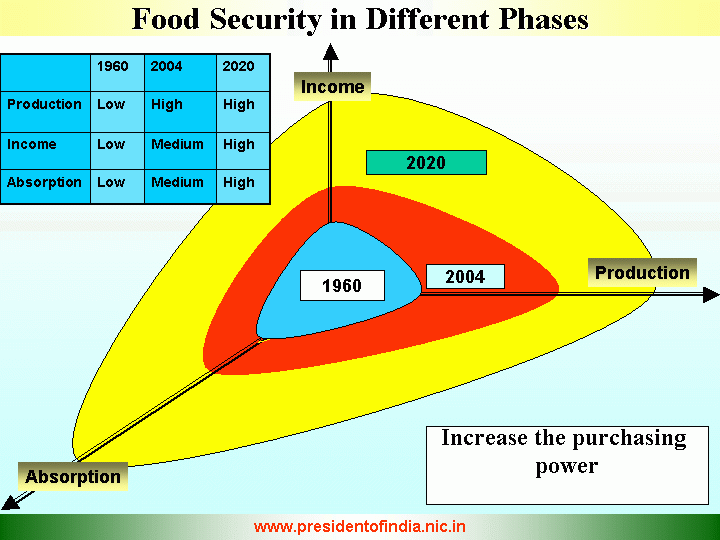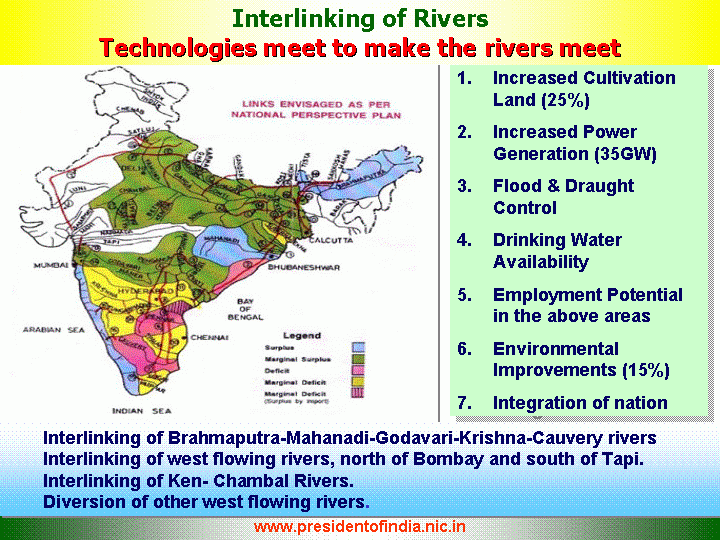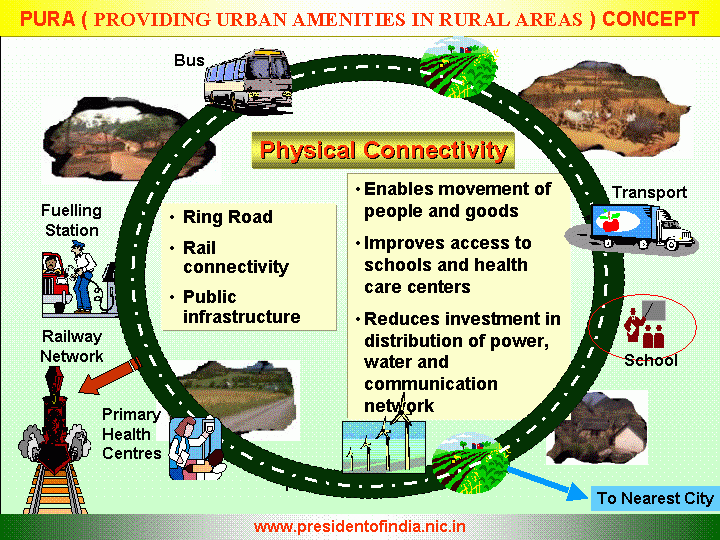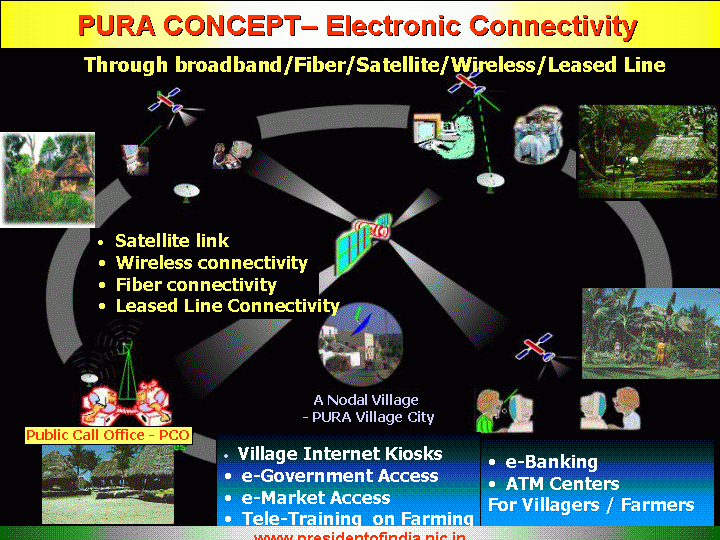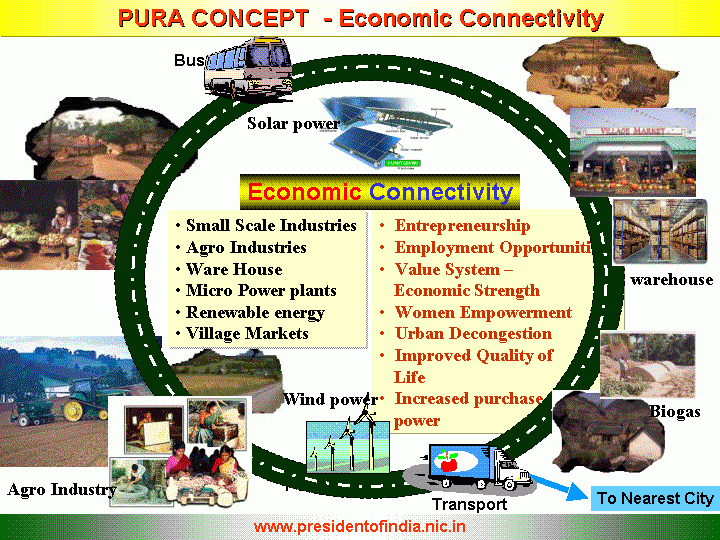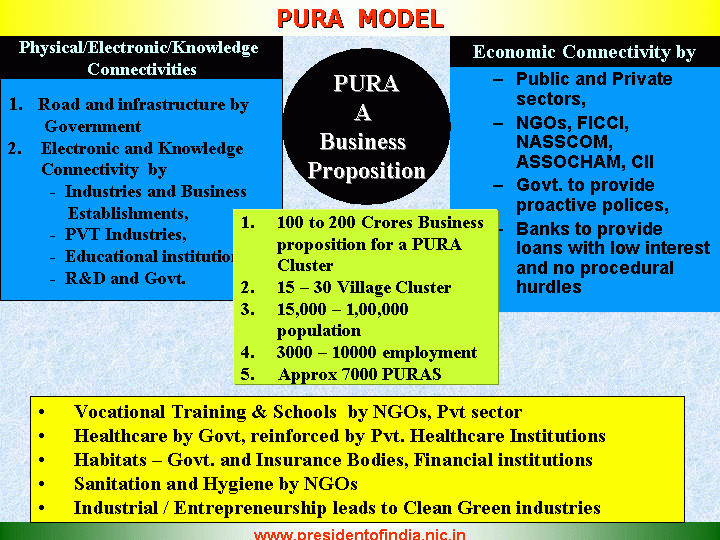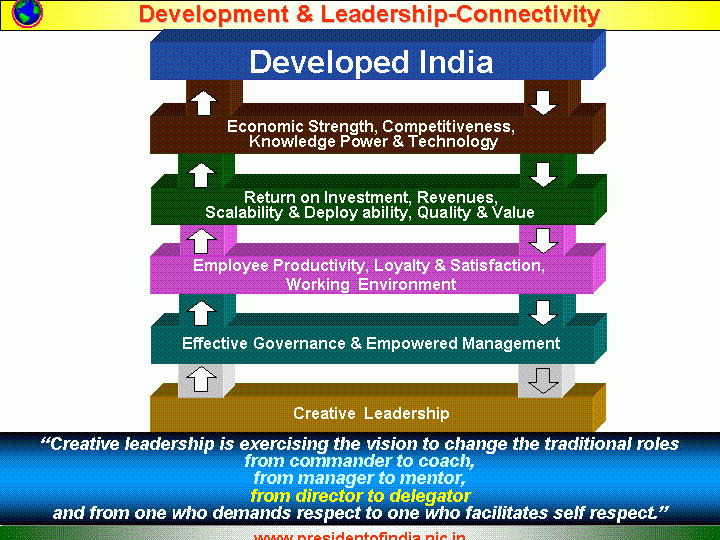Presentation to the National Council of Cii
New Delhi : 04-03-2004
Rural development ? Development of the Nation I am delighted to meet the National Council Members of the Confederation of Indian Industry (CII). I am happy to note that the manufacturing sector has made an investment of over Rs.1,50,000 crores, producing an annual output of Rs. 4,00,000 crores which accounts for nearly 17% of GDP. The order books in the industry appear to be full and the industry as a whole is in the ascent phase. This is a healthy sign. However, I have three concerns in the present scenario. Firstly, our higher education system is producing nearly three million graduates every year who are seeking employment in the job market. In addition, annually six to seven million students come out from the high schools and the higher secondary schools. Thus, every year we have to find employment opportunities for nearly ten million people. The job generation capability in the country is not in a position to absorb all the eligible candidates, leading to a major dissatisfaction among the youth. Secondly, when I visited number of States, I found that all regions in the country are not uniformly developed. Some of the areas need special attention from the industrial sector. When I visited Bihar, I found that the soil is extremely good. Water availability is plenty. People also are extremely hardworking. But the output from the fields is not commensurate with the input. We have to make use of all these resources to generate higher agricultural output from Bihar and other such states and make them into the granary of the nation. There have been successful experiments carried out by TIFAC team in Bihar, where per hectare output of wheat has been tripled by farmers in collaboration with agricultural scientists through scientific methods. Such experiments can be replicated in many parts of our country, carefully tailored to local conditions. The earnings of the participating farmers have remarkably improved. This is a crucial socio-economic need.
The third factor, which I found, is the rural unemployment. Our country has over 6 lakh villages accounting for 700 million populations living in these villages. Our national development will entirely depend upon the development of the villages and the rural population. Urgent steps are needed to uplift the rural community from the present state. As you are aware, as per the present estimate 260 million people live below the poverty line. All our efforts should be towards uplifting these 260 million people and making them earn substantially above the poverty line. This according to the economic experts is possible only when our annual growth in GDP becomes over 10% from the existing average 7% and is maintained consistently for a decade. We have to address these problems and make concerted efforts through which we can realize the national goal of becoming a developed nation by the year 2020.
In response to the President?s Address, Members of the National Council made the following observations:
1. India has a large area, which is vacant. The Government must allow planting of trees in these areas, which can provide adequate employment and revenue to the rural population. In the long run it is also sustainable. ITC has used this concept at Bhadrachalam in Andhra Pradesh. This has resulted in providing work for large number of villagers.
2. Farmers have been provided with the meteorological data, market prices through Internet kiosks. This enables them time the plantations, farming and cultivation and disposal of the produce at attractive rates.
3. The provision of wireless based Internet connection can provide large-scale employment to our rural youth in the villages with limited training.
4. We have to create capacity for self-employment in the village sector to remove the unemployment problem.
5. Tourism has a large potential for wealth generation. We have to provide infrastructural support to tourism for attracting international tourists in large numbers.
6. Our health care industry has large amount of specialists and they are doing quite well. However, delivery of care needs to be improved to get maximum advantage from this sector.
7. In one of the experiments in cotton it was found that the present yield of 300 Kg per hectare of cotton has been increased to 700 Kg per hectare with technological intervention. This model can be replicated in many other places, which can help us to generate annual revenue of over Rs. 25,000 crores. In this case the textile industry has to link itself with the farming in the local and adjoining areas.
8. We have to enhance our national innovation capacity and promote creativity among the undergraduate students. The curriculum in the engineering institutions has to be structured to enable students to be creative and also to motivate them to take up research assignments.
9. Educational institutions and industry tie-ups have yielded good results into the cost effective development of innovative products. This should be encouraged.
10. Education at the grass root level is inadequate; use of technology is required to promote quality education at this level, which is essential for developing the rural sector.
Presentation Slides (GIF Image format)

